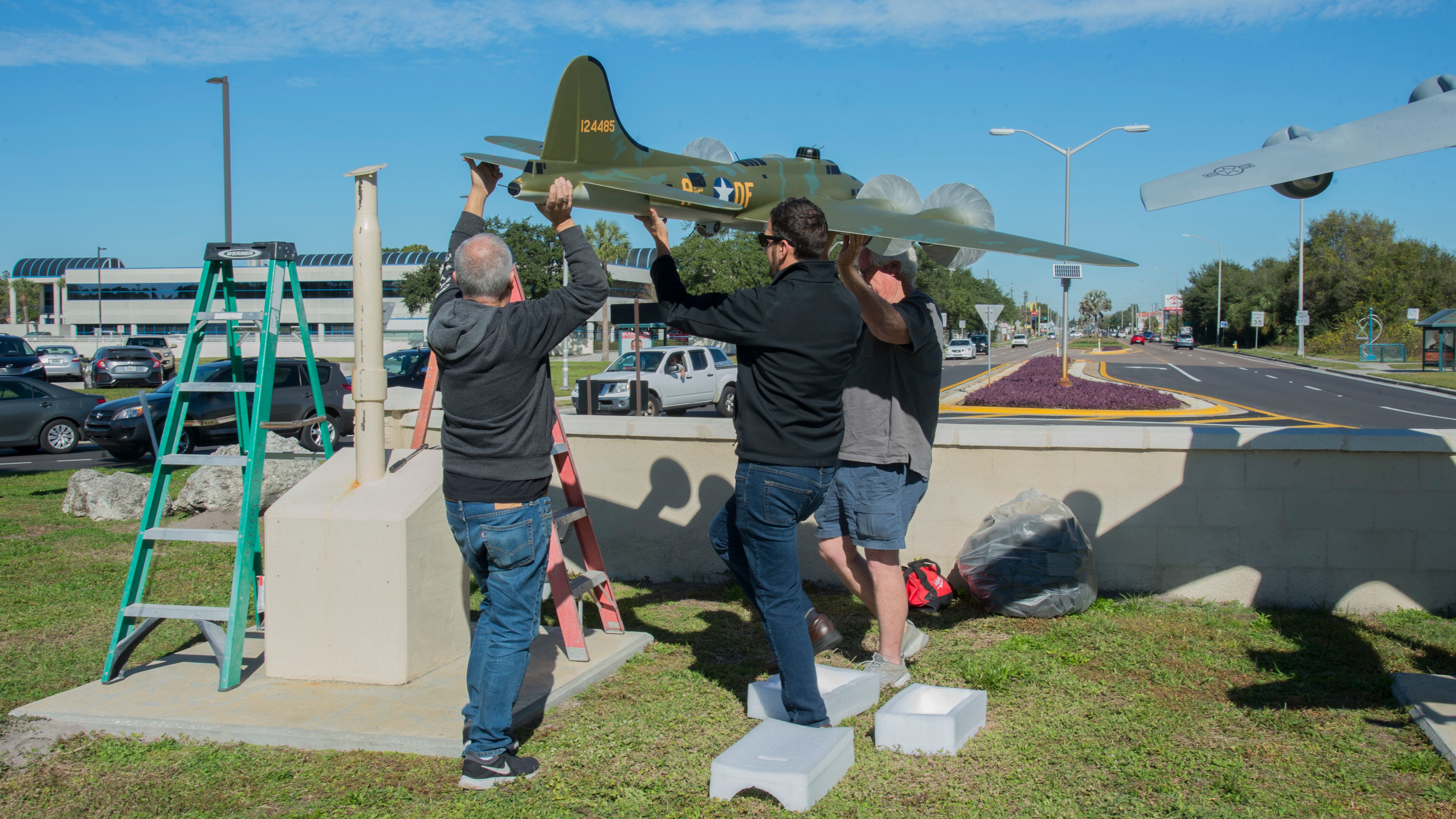MacDill Air Force Base in Florida this month erected a replica of the Memphis Belle, the World War II B-17 that returned to MacDill after conducting 25 combat missions against Nazi Germany.
The replica accompanies a display of a KC-135 Stratotanker that stands near MacDill’s main gate, a nod to the Air Force’s 6th Air Refueling Wing that is based out of MacDill and operates more than a dozen KC-135 aerial refueling aircraft.
“The MacDill command team wanted to represent MacDill’s past and present,” said Col. Stephen Snelson, 6th Air Refueling Wing commander, in a recent Air Force news release.
“What better way to honor MacDill’s heritage than to display the Memphis Belle and our KC-135,” Snelson said. “These aircraft show that MacDill was and is at the forefront of the fight.”
The fiberglass display placed outside MacDill’s main gate replaces a model of a C-37A aircraft, the 6th Air Refueling Wing told Air Force Times. After the 310th Airlift Squadron was deactivated in September and MacDill’s C-37A Gulfstream jets left the base, it was time to feature a new aircraft.
The decision to stand up a display of the Memphis Belle was made last year, following a vote from MacDill’s command team, according to the 6th ARW.
B-17s first arrived at MacDill in 1941 and the base trained B-17 bomber crews through the end of World War II, according to the Air Force.
“What people might not know is that MacDill was ground zero for training B-17 bombers as of 1942,” said Stephen Ove, the 6th Air Refueling Wing base historian, in the news release. “Most of the B-17 aircrew members that flew in WWII were trained at MacDill.”
The Army Air Forces aircraft, manned by a crew of 10, was the first heavy bomber to complete 25 combat missions in Europe and come back to the U.S. Furthermore, the crew suffered no casualties while flying over Nazi Germany.
“It was rare for an aircraft to fly 25 missions without any of the aircrew being seriously injured or killed in action, and the Memphis Belle accomplished that,” Ove said.
“The Memphis Belle is a national treasure because it gave people hope during a brutal war,” Ove said.
After returning to the U.S. from Europe, the Memphis Belle stayed at MacDill for two years to train new B-17 crews.
The Memphis Belle’s pilot, then-Capt. Robert Morgan, named the aircraft after his girlfriend at the time, Margaret Polk of Memphis, Tennessee. The aircraft also features a painting of a woman’s backside on it’s nose beside the name, Memphis Belle.
Morgan retired from the Air Force in 1965 after reaching the rank of colonel, and died in 2004 in Asheville, North Carolina, according to his obituary in the Washington Post.
The Memphis Belle has been on public display at the National Museum of the United States Air Force at Wright-Patterson Air Force Base in Ohio since May 2018.





